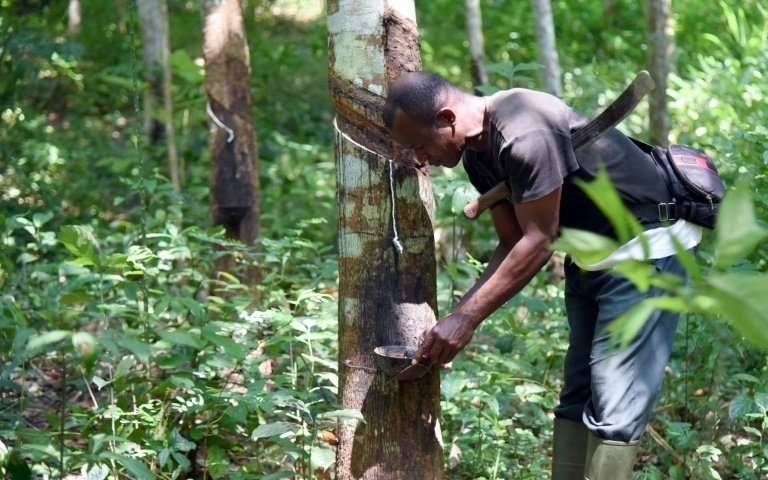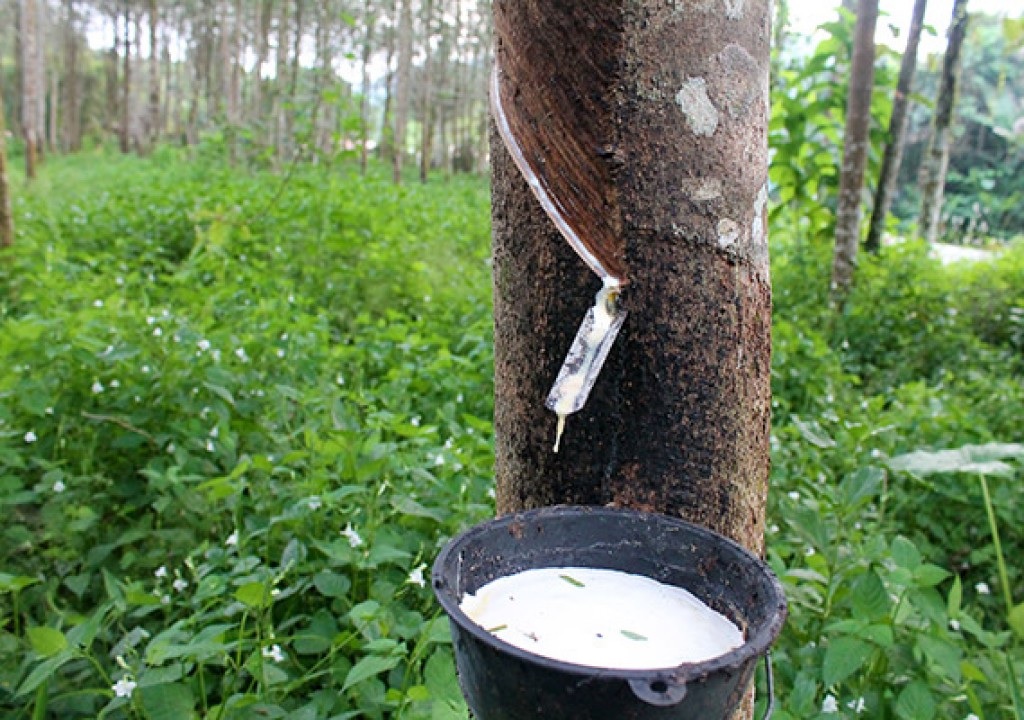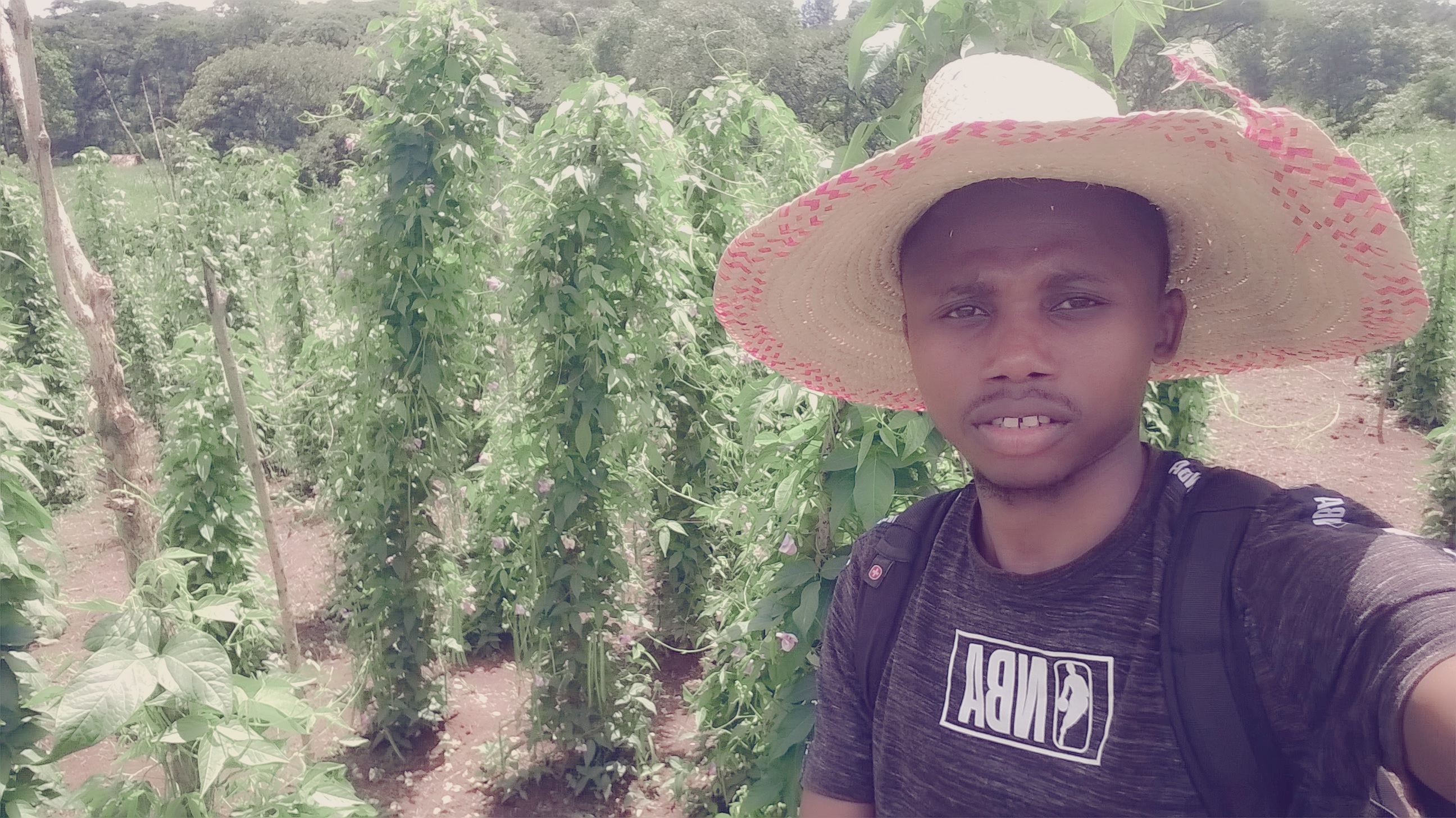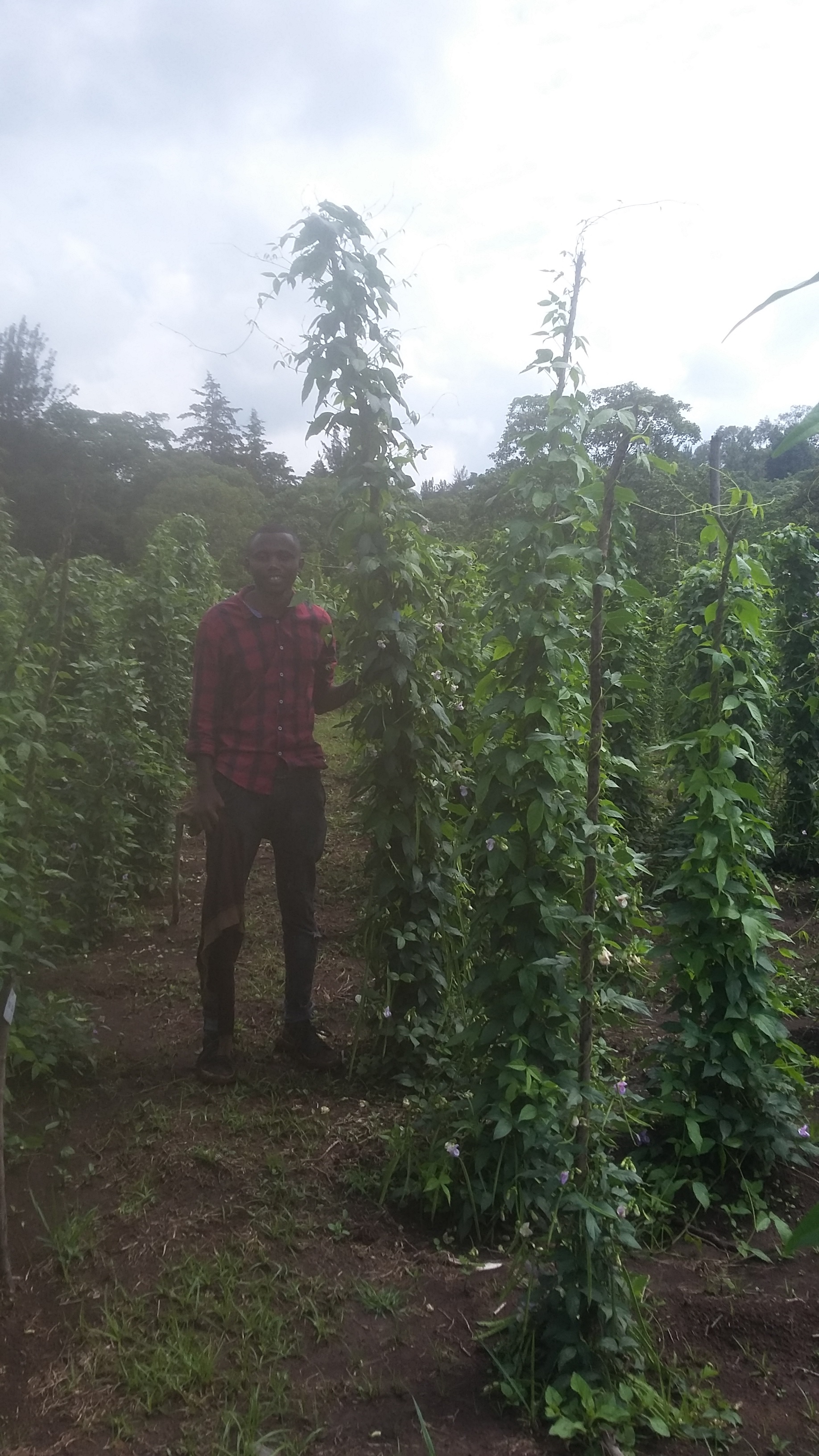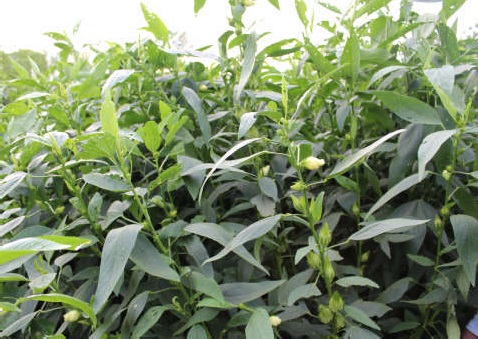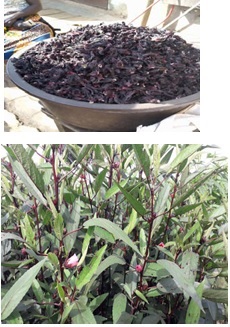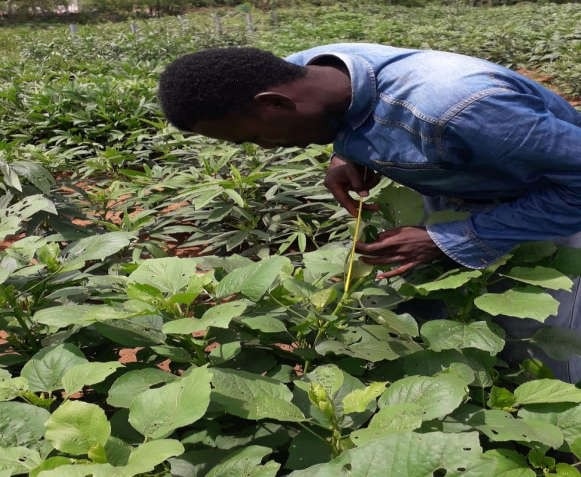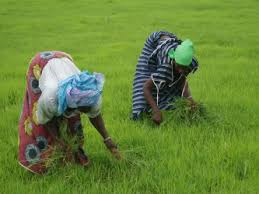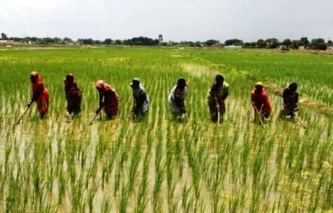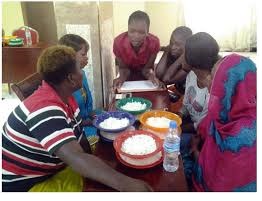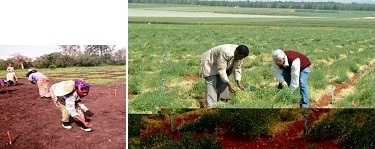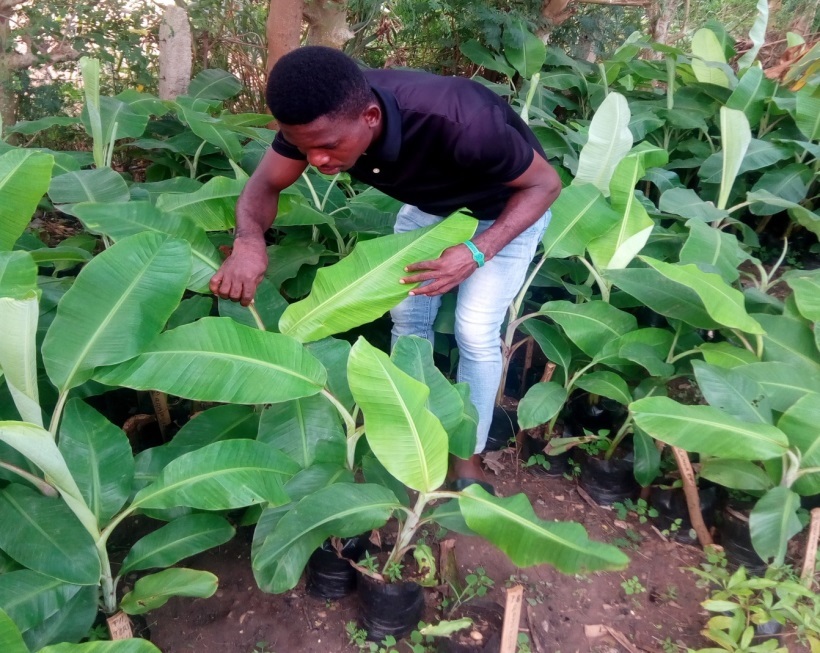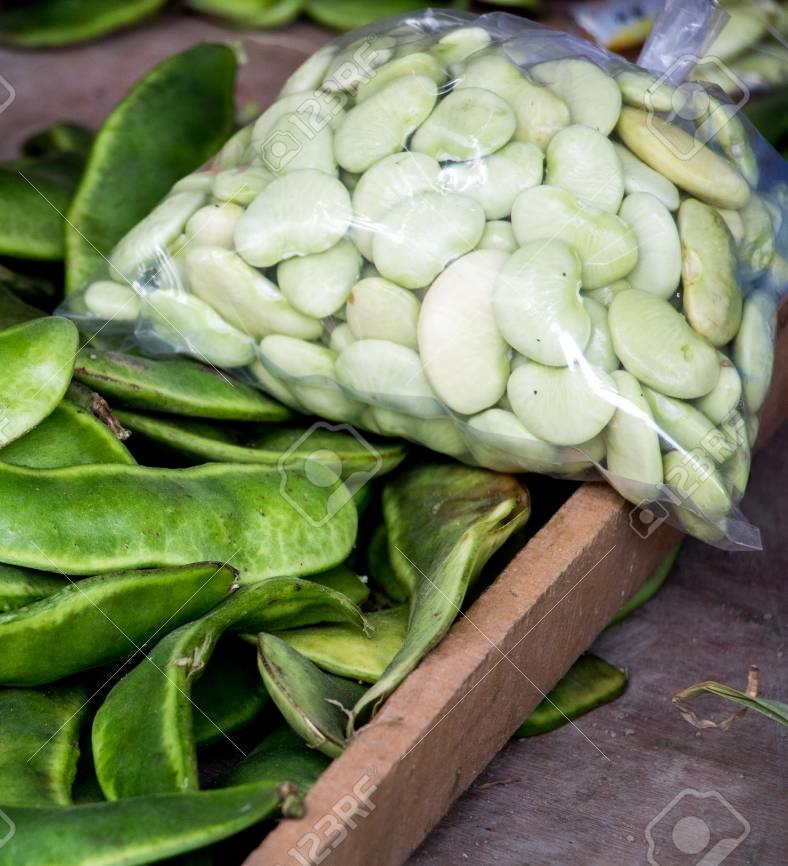Norman Munyengwa (BSc)
Home Country: ZimbabweSupervisor: Dr. Hermine Ngalle1, Dr. David Cros1 and Dr. Edmore Gasura2
1University of Yaounde, Cameroon
2Chairperson, Department of Crop Science, University of Zimbabwe.
Crop of interest
Rubber tree (Hevea brasiliensis) is one of the most important crops in the world as it provides 99% of the rubber used in the world of which 70% is used in the tire industry and the remaining 30% is used in the healthcare sector. Natural rubber is a major ingredient for more than 50,000 household, healthcare and industrial products that have elasticity as a functional attribute. In Africa, Ivory Coast is the leading producer of natural rubber and it holds 7th position at the global level.
Project title
Genomic selection in rubber tree (Hevea brasiliensis) using single nucleotide polymorphisms (SNPs) marker data obtained from Genotyping-by-Sequencing (GBS).
Summary of proposal
The major challenge faced by rubber breeders is the very long breeding cycle which can last for 30 years. The three phenotypic based selection stages in rubberare responsible for the very long breeding cycle. The use of QTL-based markers to improve rubber yield has not been succesful due to difficulties in estimating QTL × environment interactions. Genomic selection, which is a next generation, state-of-the-art approach of marker-assisted selection has huge potential to improve rubber yields and to reduce the generation interval through increasing selection intensity since more individual rubber clones can be selected at the seedling stage. My research uses whole-genome marker data from GBS and phenotypic data of rubber clones to create a genomic prediction model that is used to predict the genomic estimated genetic values (GEGVs) of rubber clones in the selection population for which only genotypic data is available. With my research, selection of rubber clones to advance to next selection stages or to release as new cultivars can be done at the seedling stage, based solely on the GEGVs. Genomic selection can help meet future demands of rubber in an environmentally sustainable way and also increase the GDP in rubber producing countries and at the same time improving the livelihoods of small-scale farmers who produce 80% of the rubber in the world.
Personal Comment about the GENEs Opportunity
The GENEs project is a fantastic and very unique opportunity for me as it has allowed me to study plant genomics which has always been my dream as a professional. The partnerships approach in the GENEs project works very well as it allows collaboration with other scientists.
NOEL Ndlovu (BSc, Crop Science)
Home Country: ZimbabweSupervisor: Prof. W. Gebreselassie1, Dr. E. Gasura and Dr. S. Dari2
1Jimma University
2University of Zimbabwe
Crop of interest
Africa Yam Bean (Sphenostylis stenocarpa (Hochst. Ex A. Rich.) Harms) is a tropical leguminous crop that serves the triple purpose of providing edible seed grain, tuber and leaf spinach. It is one of the classified under-utilized or orphan crop species with unlimited potential inameliorating the food and nutritional insecurities facing Africa in the wake of climate change its associated effects. The seed grain component of the crop contains >20% protein rendering it an inexpensive protein source for the resource-poor communities. Furthermore, Africa Yam Bean has medicinal properties in the management of hypertension, diabetes and cardio vascular diseases.
Project title
Morphological characterization and genetic diversity assessment of African Yam Bean(Sphenostylis stenocarpa (Hochst. Ex A. Rich.) Harms) Accessions in Ethiopia
Summary of proposal
The recurrence of drought and prevalence of malnutrition incidences in African small-holder farmer communities have raised the need for exploiting the potential of orphan or under-utilized crop species. Africa Yam Bean (AYB) possesses a greater potential in providing an inexpensive and sustainable solution to the aforementioned challenges. AYB accession management and planning for genetic resource capacity maximization has not been fully established. Furthermore, limited strides have been made in establishing the existing genetic diversity and the possibility of improvement of the studied accessions. The lack of background information on the crop is hindering its sustainable development. Consequently, this has led to a limited source of genetic resources conferring high yield and other favourable agronomic traits. The main objective of the study is to determine the extent of genetic diversity and inter-relationships between yield and associated traits among the collected AYB accessions for utilization in future breeding and germplasm conservation. The study is expected to open a new wave of understanding on genetic diversity among the AYB accessions which is vital in germplasm conservation and future breeding programmes.
Personal Comment about the GENEs Opportunity
The The research mobility provides an ideal platform with the capacity to catapult African agriculture towards prosperity. However, it will be of greater value if cooperation with experienced private entities in the various specialties of crop improvement isincorporated to foster growth of all student beneficiaries of the programme.
Hailu Lire WACHAMO (BSc)
Home Country: EthiopiaSupervisor: Prof. Enoch Achigan-Dako1, Dr. Wosene Gebreselassie2 and Dr. Temesgen Magulo2
1Faculty of Agronomic Sciences, University of Abomey Calavi (UAC), Benin Republic
2Faculty of Agriculture, Jimma University, Ethiopia
Professional Experience:
Researcher in Ethiopian Institute of Agricultural Research under crop research process.
Scientific Publication
Hailu has published 4 (four) journal articles.
Crop of interest
Roselle/Karkade (Hibiscussabdarifa L.) is an annual plant in the family of Malvaceae grown in the tropics and subtropics (Wilson,1994).It is an important economic, medicinal and pharmaceutical plant mainly cultivated for its calyx (sepal), which is of three types: green, red and dark-red. Its seeds, leaves, and roots are also economic importance. It is used to treat hypertension, pyrexia and liver damage, against leukemia due to its high content in polyphones, particularly protocatechuic acid and in Ayurvedic medicine. Fleshy red calyxes (sepal) of Roselle are commonly used for the production of soft drinks and tonic without alcohol like wine, juice, jam, jelly, syrup and also dried and brewed into tea and spice. In Africa it is a popular beverage drink like Zobo in Nigeria and bissap in francophone West African countries; and karkade tea in East Africa (Ethiopia, Egypt, Kenya, Sudan and South Sudan). Its demand steadily increased over the past decades. Currently, approximately 15,000 metric ton senter into international trade each year and; Germany and America are the main importing country in theworld.
Summary of proposal
Roselle has nutritional and health importance, it also has an achievable economic value and important role in income generation and subsistence for rural farmers in developing countries (Atta, 2011). But it has been received little attention in Africa; its yield affected by various biotic and abiotic factors and little is known regarding to germplasm collection, characterization, genetic variability study for its yield and yield related trait improvement as well as post harvest handling. This is supposed to be large when considering its wide geographical distribution. Its calyx (sepal) yield improvement requires consideration of all traits in its breeding programs and knowledge of associations between all the traits are essential to determine the most efficient breeding procedure and leads to the choice of elite lines. For using available genetic resource in the continent characterization is relevant for the further improvement program. With these rationales mainly the study focused on morphologica land molecular characterization of roselle (HibiscussabdriffaL.) accessions from East and West Africa. To provide an initial information complemented by molecular techniques for its further genetic improvement which address targeted commercial trait and breeders to make better decisions when choosing the germplasm used in breeding programs.
Personal Comment about the GENEs Opportunity
I am glad to be a scholar of the Intra Africa Academic Mobility GENES project. Because of this opportunity, I got a chance to study molecular and morphological characterization from a regional collection on economically important leafy vegetable and medicinal but under-researched Roselle crop to increase its production and productivity for steadily increasing demand and emerging industry.
Miss Catherine Ifekwe (B.Agric, Crop Science)
Home Country: NigeriaSupervisor: Prof. Enoch Achigan-Dako1, Prof. Happiness O. Oselebe2
1Faculty of Agronomic Sciences, University of Abomey Calavi (UAC), Benin Republic
22Faculty of Agriculture & Natural Resources Management, Ebonyi State University, Nigeria
Crop of interest
Fonio Digitaria exilis Kippis Stapf and Digitaria iburua KippisStapf is one of the oldest domesticated cereals in West Africa as far as 2400BC (Larson et al. 2014). Fonio has important potential not only as survival food, but as a complement for standard diets and source of income. It is a brewer’s grain for beer brewing and can be ground into flour for preparation of local beverages. More than 710,000ha of fonio are grown each year in West Africa and the production runs at 620,000t (average yield 870kg/ha). Fonio feeds millions of people during the most difficult months of the year.
Project title
Agro-phenological characterization fonio accessions (Digitaria spp.) grown in northern Nigeria
Summary of proposal
Despite the importance in traditional agriculture, research efforts to improve fonio millets are still at a low level. In consequence, the crops remain primitive facing diverse agronomical and technological problems. Fonio cultivation relies only on traditional landraces which are, despites their adaptability to marginal farming system, less productive. Therefore, the objectives of the present study is;To evaluate the genetic variations among the fonio germplasm collected from Northern Nigeria in other to identify varieties with unique traits for possible recommendation. The specific objectives of the study are to; a) collect and document fonio accessions and related farmers knowledge in five Northern State of Nigeria, b) investigate the phenological diversity among the collected fonio accessions using fonio descriptor, and c) assess the morphological relatedness of the cultivated indigenous fonio accessions.Add pictures of people growing your crop, or using it. Or pictures of yourself managing the genetic resources.
Personal Comment about the GENEs Opportunity
--
Dennis OKPORIE (B.Agric, Crop Science)
Home Country: NigeriaSupervisor: Prof. Enoch Achigan-Dako1, Prof. Happiness O. Oselebe2
1Faculty of Agronomic Sciences, University of Abomey Calavi (UAC), Benin Republic
22Faculty of Agriculture & Natural Resources Management, Ebonyi State University, Nigeria
Crop of interest
Rice is a seed of monocot, with 24 chromosomal number 2n=24, which has two major domesticated species, O. Sativa (the most commonly grown in Asia which originated from the river valley of Yangtze mekonrivers) and O. Glaberimma (popularly known as Africa rice) which has its center of origin in Delta of Niger river in Africa. NERICA is the crossing progeny of both species. It is one of the major staple food crop.It is consumed by human and livestock and services as raw materials to industries in the production of flour, infant food, livestock feed etc, and a major source income to household farmers.
Research Topic
Accessing the genetic diversity among selected rice accessions using morphological and SSR markers.
Summary of proposal
It has been expounded that identification and evaluation of high heritability in accession alone will not be enough for variety development but the combination of morphological and molecular markers will be useful in studying genetic diversity of rice for conservation, breeding and other crop improvement activities. However, this study will aim at accessing the genetic diversity among selected rice accessions using morphological data and SSR markers in other to identify high yielders with superior quality traits and diverse adaptability, for use as parents in a breeding program. The breeding tools to be applied include the use of morphological characterization and SSR markers, with a molecular breeding method. This will be conducted in a simple lattice design experiment. Moreso, It is expected at the end of this research that genotypes of superior genetic quality with high adaptive mechanism to our environment would be identified among the selected rice accessions and would be subjected to further improvement which will help in combating food insecurity in Africa and globally.
Personal Comment about the GENEs Opportunity
The gene opportunity has widened my scope in the area of becoming a renowned plant breeding researcher and a clear understanding about the need of molecular breeding in this comtempory society. It has enhanced my rational ability and focus in offering solution to the present need in agriculture.
Desalegn Abebe MEKONEN (BSc, Biotechnology)
Home Country: EthiopiaSupervisor: Prof. Barrage Moussa1, Prof. Happiness O. Oselebe2
1College of Biological and Chemical Engineering, Addis-Ababa Science and Technology University.
2Faculty of Agriculture & Natural Resources Management, Ebonyi State University, Nigeria
Professional Experience
Calibration and verification of measurement instrument and quality analysis, testing of food and chemicals in trade and transport beruea in Addis Zemen, Ethiopia.Amhara Regional Agricultural Research Institute/ARARI (Bahir Dar, Ethiopia)
Crop of Interest
Grass pea (Lathyrussativus L.) is a food, feed and fodder crop belonging to the family Leguminosae (Fabaceae). It is a much-branched sub erect, straggling or climbing herbaceous winter annual crop. Its reproduction system is by seed and is a self-pollinating crop. The genus (Lathyrushas 187 species and subspecies being recognized (Wang et al., 2015). It is strictly diploid with chromosome number being 2n=14. Grass pea grows widely in several tropical and subtropical areas of the world. In Ethiopia Grass pea is the fifth most important pulse crop in the country and is commonly cultivated on heavy clay soils (mostly vertisols). Grass pea seeds are used in India, Ethiopia and other developing countries as part of the diet of the poor in times of famine. Seeds are used for making bread, paste balls, local beverages, utilized as boiled (nifro) or roasted (kolo), shiro (powdered seeds) (Urga, et al. , 2005).
Research Topic
Study on Genetic diversity of Grass pea (LathyrussativusL.) and Association of β- ODAP content of Seed in Ethiopian Genotypes with SSR Markers.
Summary of proposal
Grass pea (Lathyrussativus L.) is the source for cheap and nutritious food choice in drought and famine susceptible regions of the world. However, its use is limited and remain masked because of the presence of an endogenous neurotoxic non-protein amino acid β-N-oxalyl-L- α, β- diaminopropionicacid (β-ODAP). To date, only a limited number of studies have been conducted ingrass pea genetic diversity study using SSR marker. The aim of this study will be to specify the β-ODAP content of seed and genetic variation of Grass pea genotypes using SSR markers and clarify their phylogenic relationship in order to establish breeding programs which will be vital for the development of improved varieties of this underutilized legume crop in Africa and other parts of the world. For this, 25 grass pea accessions kindly provided by theEthiopia Biodiversity Institute/EBI/, Ethiopia will be used. This experiment will be laid down on simple lattice design 5x5. At the end of this project, it is expected thatmolecular variations and similarity of Grass pea accessions will be determined, Low β-ODAP content genotype will be identified and Association of seed β-ODAP content with molecular marker will be revealed.The information generated in this study can serve as a component of effective germplasm conservation and breeding programme to improve this crop, so that farmers and other stakeholders in the grass pea value chain will benefit as a whole.
Personal Comment about the GENEs Opportunity
First of all, I would like to appreciate GENEs for bringing this exciting project and the Coordinators of the project. I am delighted to be part of GENES project. The impact of the project will be irreplaceable in terms of skill, knowledge, resources and culture sharing between African brothers and it will create future collaboration in Africa. However, the fund allocated to research is very small especially for projects involving molecular studies.
Amobi Francis OZIBO (BSc, Applied Biology)
Home Country: NigeriaSupervisor: Prof. Happiness O. Oselebe1 and Prof. Enoch G. Achigan-Dako 2
1Faculty of Agriculture & Natural Resources Management, Ebonyi State University, Nigeria
2Faculty of Agronomic Sciences, University of Abomey Calavi (UAC), Benin Republic
Crop of Interest
Bananas also referred to as Musa L., are perennial monocotyledonous herbs characteristically divided into dessert bananas, cooking bananas and plantains and beer bananas. It is highly nutritive and serves as source of food for man because of its high energy content. It contains all essential nutrients including vitamins and minerals. Banana is used industrially to produce insecticide, colour absorber, antioxidant, biogas, alcohol and cattle feed.
Research Topic
Effects of drought condition on phenotypic traits of banana assertions
Summary of proposal
Bananas are quite sensitive to drought; however, genotypes with “B” genome are more tolerant to abiotic stresses than those solely based on “A” genome. Bananas with “ABB” genomes in particular are more tolerant to drought and other abiotic stresses than other genotypes. Therefore, this proposal is aimed at determining the effects of prolonged water inadequacy on the morphology of banana assertions. Bananas require frequent irrigation to avoid significant crop losses, especially during dry periods. Bananas, originally a tropical fruit crop, have reached the sub-tropics and even semi-arid regions owing to their adaptations and to growers' perseverance to manage the crop at the small expense of yield and quality.The objectives of this proposal is to assess the effect of soil moisture deficit stress on juvenile vegetative stage, floral primordial initiation (PI) stage,flowering and bunch development on yield and yield parameters.Parameters will be taken on individual assertion of both optimal and drought condition. Stomatal conductance, cell membrane stability (CMS), leaf emergence rate, rate of leaf senescence, RWC, and bunch yield under soil moisture deficit stress are some of the traits associated with drought tolerance. Among these stress, bunch yield under drought condition will be given top priority for phenotyping.
Personal Comment about the GENEs Opportunity
I am highly gratified over GENES opportunity. GENES has granted me the opportunity to develop myself academically and research wise through its funding. With GENES opportunity, I can now participate abundantly in practical and researches which I would have done peripherally owing to facility inadequacy. In all, all thanks to GENES.
Chukwunyere Ebube Oliver (BSc, Biological Sciences)
Home Country: NigeriaSupervisor: Dr. Wosene, G.1, Prof. Okezie, C., and Dr. Ofodile L. N. 2
1Jimma University, Ethiopia
2Chukwuemeka Odumegwu Ojukwu University (former Anambra State University), Nigeria
Crop of Interest
Lima bean is the second most important legume in the world of the genus Phaseolus. A herbaceous species which includes both annual determinate bush types and perennial indeterminate climbing types, perennial due to the presence of large swollen tap roots. The bush types are short, about 0.6 m tall, whereas the climbing types are up to about 25 m. Each plant on maturity produces a large number of pods. Each pod is oblong, often curved and terminates in a sharp beak facing the dorsal suture. Pods contain two to four seeds and dehisce on drying. Seeds may be small, medium or large-sized depending on the lima bean type. Seed weight varies from about 0.5 g/seed in the small-seeded types to as much as 3-4 g per seed in the large-seeded types. Seed shape may range from kidney, through rhomboid to round. Seed colour is variable and may be speckled, mottled, or full-coloured. Colours vary and usually include white, grey, yellow, brown, purple or black. Wild varieties usually have small pods, are small-seeded, seed colours being predominantly grey, black or speckled.Economic and industrial Importance includes, a) its intake can lowers LDL cholesterol levels, b) they have anticancer benefit because of it phytochemicals coumestrol and saponins, compounds contents, c) nitrogen-fixating legume that sheds its leaves profusely therefore can be used for soil fertility restorer, d) its forage can be fodder used in making silage and hay for animal feeding or diet supplements, and it is used as a food and an alternative income source for the local population.
Research Topic
Variability study for yield and quality traits in Lima bean (Phasiolus lunatus) using morphological and nutritional parameters.
Summary of proposal
Lima bean, Phaseolus lunatus is a member of the family leguminosae. It is an easy to grow grain legume and of a high food valve and many health benefits with a protein content ranging from 17 to 40 g/100 g, quite higher than that in cereals (7-11.8 g/100g) and approximately equal to the protein content of meat 18-25 g/100 g. It fat content is low as It also contains carbohydrate (sugar and starches), vitamin and minerals (calcium, iron, phosphorous, and potassium). The development of strategies for genetic breeding and for in situ and ex situ seed conservation is important. The genotypes maintain several undesirable traits, including pest and disease susceptibility, indeterminate growth, long life cycle, and high hydrocyanic acid content, among others, they also have good local adaptation and a large amount of genetic variability. More also, in the developing world, protein energy malnutrition is a major challenge and it is quite difficult to provide adequately, animal protein supplies needed by consumers without incurring high cost. Therefore, main objective of this work will be to carry out the variability study for yield and quality traits in Lima bean (Phasiolus lunatus) using morphological and nutritional parameters. Data will be collected forthe proximate, mineral and anti-nutrients contents in the raw, cooked, roasted, germinated and fermented lima bean samples. As we expect,the result of this study may qualify Lima Bean for use in making flour and used in many other food preparations such as baby foods and baked products. The crop has been observed to have high yield potential, deep root system and drought tolerant, making it a good prospect crop in tropical Africa.
Personal Comment about the GENEs Opportunity


